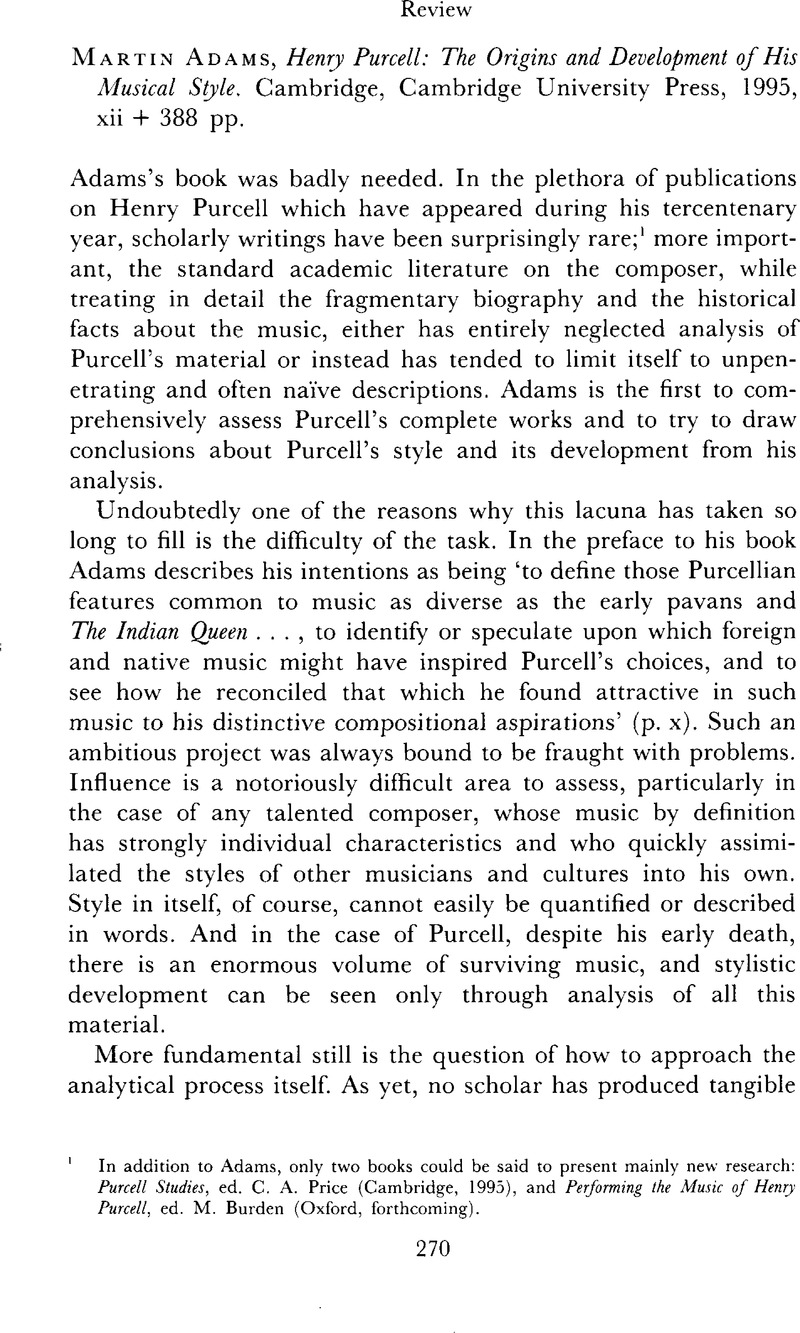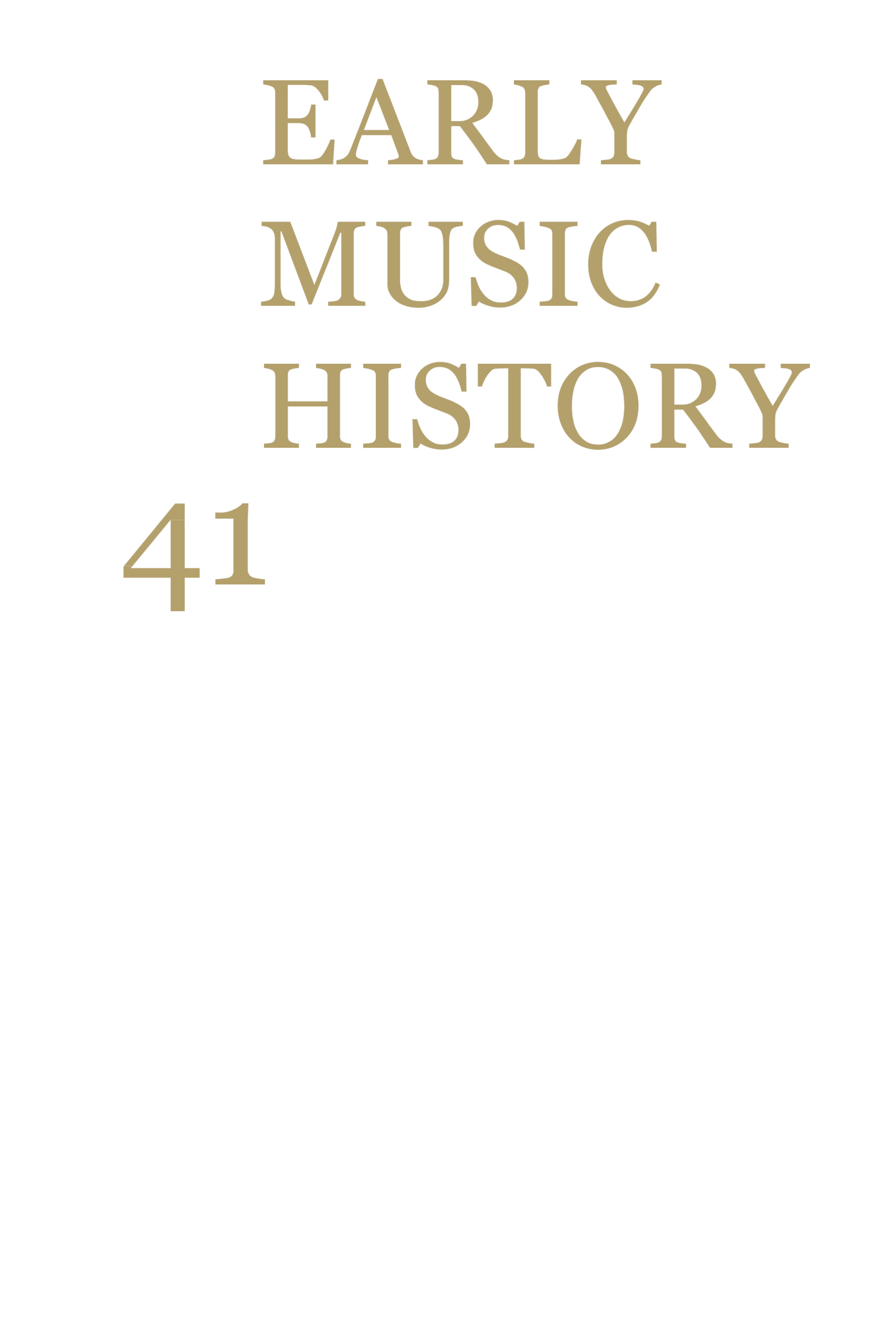No CrossRef data available.
Article contents
Martin Adams, Henry Purcell: The Origins and Development of His Musical Style. Cambridge, Cambridge University Press, 1995, xii + 388 pp.
Published online by Cambridge University Press: 05 December 2008
Abstract

- Type
- Reviews
- Information
- Copyright
- Copyright © Cambridge University Press 1996
References
1 In addition to Adams, , only two books could be said to present mainly new research: Purcell Studies, ed. Price, C. A. (Cambridge, 1995)Google Scholar, and Performing the Music of Henry Purcell, ed. Burden, M. (Oxford, forthcoming)Google Scholar.
2 For a detailed account of developing tonal theories in the seventeenth century see, for example, Atcherson, W. T., ‘Key and Mode in Seventeenth-Century Music Theory Books’, Journal of Music Theory, 17 (1973), pp. 204–33CrossRefGoogle Scholar; Bush, H. E., ‘The Recognition of Chordal Formation by Early Music Theorists’, Musical Quarterly, 32 (1946), pp. 227–43CrossRefGoogle Scholar; Lester, J., ‘The Recognition of Major and Minor Keys in German Theory: 1680–1730’, Journal of Music Theory, 22 (1978), pp. 65–103CrossRefGoogle Scholar; Lewis, C., ‘Incipient Tonal Thought in Seventeenth-Century Music Theory’, Studies in Music from the University of Western Ontario, 6 (1981), pp. 24–7Google Scholar; Rivera, B. V., German Music Theory in the Early Seventeenth Century: The Treatises of Johannes Lippius, Studies in Musicology, 17 (Ann Arbor, Michigan, 1980)Google Scholar; Rivera, B. V., ‘The Seventeenth-Century Theory of Triadic Generation and Invertibility and Its Application in Contemporaneous Rules of Composition’, Music Theory Spectrum, 6 (1984), pp. 63–78CrossRefGoogle Scholar; Wienpahl, R., ‘English Theorists and Evolving Tonality’, Music and Letters, 36 (1955), pp. 377–93CrossRefGoogle Scholar; and Wienpahl, R., ‘Modality, Monality and Tonality in the Sixteenth and Seventeenth Centuries’, Music and Letters, 52 (1971), pp. 407–17, and 53 (1972), pp. 59–73CrossRefGoogle Scholar.
3 Adams, M., ‘The Development of Henry Purcell's Musical Style’, Ph.D. dissertation (Southampton, 1984)Google Scholar.
4 This is particularly true in the cases of the fantasias and Locke's Consort of Four Parts (pp. 12–13). and ‘Great Diocles the boar has kill'd’ from Dioclesian and Carissimi's Lucifer, coelestis olim hierarchiae princeps (pp. 64–5).
5 Westrup, J. A., Purcell, The Master Musicians (London, 1937Google Scholar; rev. N. Fortune, London, 1980, repr. Oxford, 1995).
6 Price, C. A., Henry Purcell and the London Stage (Cambridge, 1984)Google Scholar.


